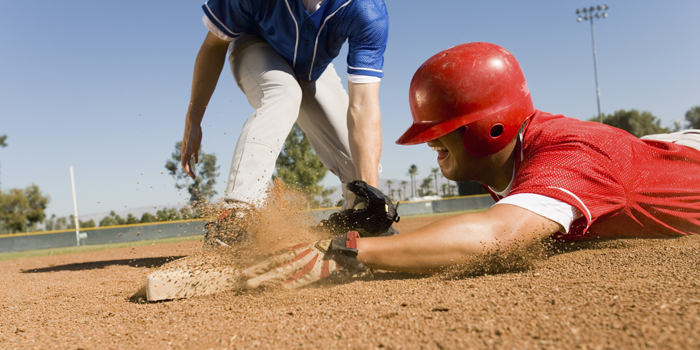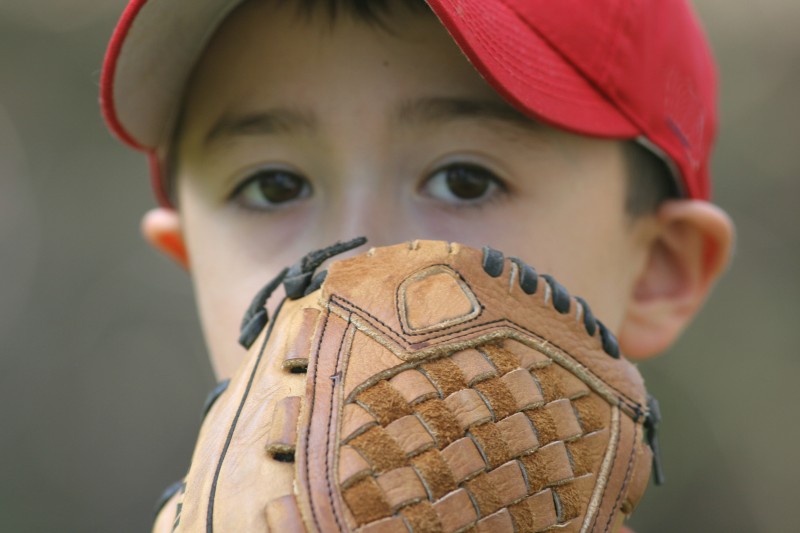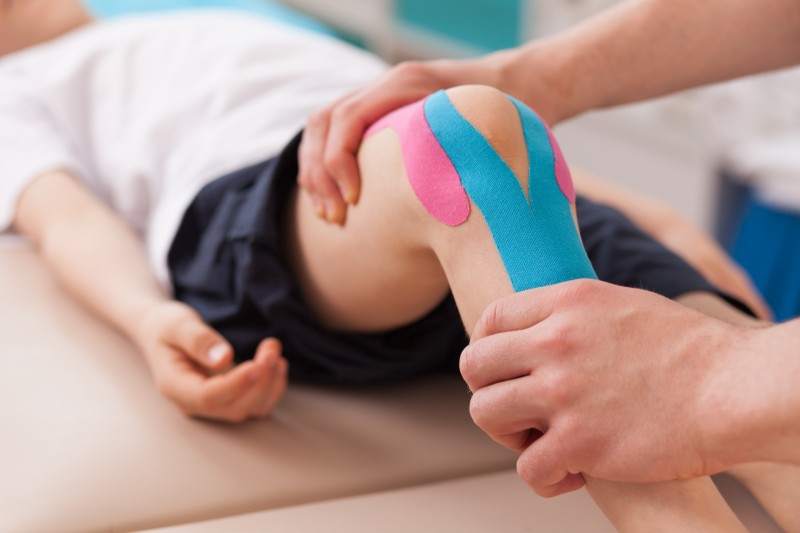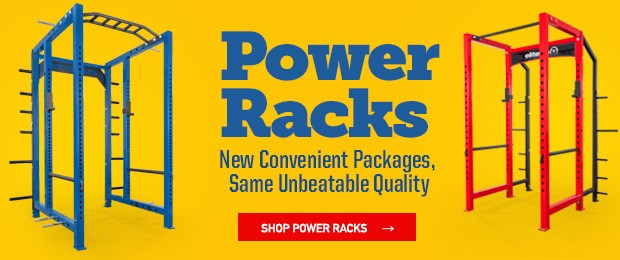
The subject of strength training young athletes is a hot topic among parents and coaches. Based on the feedback of many professionals and trainers in this arena, here is what we currently know:
- Speed camps and speed/agility training are the only safe and acceptable type of training for young athletes.
- Strength/weight training for young athletes is inappropriate, unsafe and should be discouraged until the young athlete is fully developed.
- If you recklessly decide to strength/weight train a young athlete, you will stunt their growth by sealing off their growth plates.
- Finally, of course, strength/weight training will make your young athletes big and slow.
How many times have you heard the above?
It’s 2016 and people still believe this nonsense. The most serious issue is that this information is not typically originating from uneducated, uninformed parents. Oh, no — these uneducated and outrageous claims are originating from individuals claiming to be professionals. For the sake of all athletes, this has to stop.
It’s time for strength coaches to stand up and say enough is enough and call out the coaches, physical therapists, physicians, and anyone else making these ridiculous claims. For god's sake, there are still “trainers” out their training lineman by standing one legged on Bosu balls or using vibration plates while curling ten-pound dumbbells and calling it a legitimate workout for athletes. I’m dead serious.
RELATED: What Not To Do — Parenting Youth Athletes
We have high school football coaches telling our parents that they shouldn’t have their athletes engaged in strength training because it will hurt them and make them big and slow. Take a moment to think about that statement. Here you have football coaches telling the kids to run and tackle one another as fast and as hard as possible, but for God’s sake, do not allow them to strength train in order to strengthen their bones, ligaments, and tendons, which in turn will help protect the athletes from their sport.
It’s very simple. The people making these claims do not understand strength training, have never strength trained themselves, and most likely are very intimidated by strength training and therefore make a judgment. They conclude that if they don’t understand it, it must be bad! The bottom line is that these people in no way should be training athletes or providing training guidelines to athletes. An even greater concern is that these professionals with strong opinions do not have the decency to look into the subject or spend any time researching it. The fact is, we have A LOT of stupid people out there and it seems like everyone wants to be a strength coach these days.
A basic and efficient glimpse of strength training would very quickly yield the following information:
- There are endless benefits associated with weight training for young athletes.
- Strength training is recommended for children as young as six by major professional organizations.
- Weight and strength training has been shown to be much safer than running, jumping, or participating in most sports.
This article is a culmination of what the research says as well as what the major professional organizations say about lifting and young athletes. With all the information presented, it should be second nature for parents to actively pursue strength training in an attempt to improve the preparedness of aspiring young athletes for the demands of sports participation.
That being said, this is also a call to action.
All weight/strength training programs for youth should be competently supervised, properly instructed, and appropriately designed. Strength training should not be taken lightly and should only be taken lightly. Coaches and parents should have the diligence to find highly competent strength coaches that possess both the academic as well as the practical experience to properly teach and develop programming for athletes. There are currently no standards or requirements to call yourself a strength coach.
Let me be perfectly clear: there are a bunch of idiots out there with no backgrounds and no basic knowledge of strength training principles that want to believe and call themselves strength coaches/trainers, etc. All I can say at this time is buyer beware, and for god's sake don’t send your kids to a dodgeball trainer.
Benefits of Strength Training
The benefits of strength training on young children are well documented. Appropriately prescribed and competently supervised youth resistance training programs offer significant health and fitness benefits to boys and girls:
- Enhancing overall muscular strength and local muscular endurance
- Strengthens muscles, ligaments, tendons
- Improves bone mineral density
- Improves body composition
- Positively influences aerobic fitness
- Improves blood lipids
- Improves motor performance skills (e.g., jumping and sprinting)
One of the best benefits of youth strength training is its ability to improve the preparedness of aspiring young athletes for the demands of sports participation. Although millions of boys and girls participate in sport, it seems that a growing number of young athletes are suffering sports-related injuries because they are ill-prepared for the demands of sports practice and competition. An estimated 15% to 50% of all injuries sustained by youth while playing sports could be prevented if more emphasis was placed on developing fundamental fitness abilities prior to sports participation (1).
Ground Force Reactions and Injuries
When youth athletes are practicing and playing in sporting events, they are subjected to ground reaction force and reaction on the body. Every step you take is subject to gravity (how much you weigh) and momentum (how fast you are moving). The majority of injuries in sports are caused by these ground force reactions.
Every time you do an activity, you are putting huge amounts of stress on your body:
- Walking = 1.5 x Bodyweight
- Running = 3-6 x Bodyweight
- Jumping = 4-11 x Bodyweight
For a 120-pound athlete, this means:
- When your 120-pound athlete walks, he/she is putting 180 pounds of force on a single leg.
- When your 120-pound athlete runs, he/she is putting 240-720 pounds of force on a single leg.
- When your 120-pound athlete jumps he/she is putting 480– 1320 pounds of force on a single leg.
Take this a step further and apply these forces into normal childhood play and sports and they become even greater. Throwing, tackling, jumping out of trees and falling of jungle gyms will all far exceed any stress on a young athlete’s bones that we could possibly apply in a strength training setting.
When we strength train our young athletes, it is done in a controlled environment and the loads are gradually and systematically increased over time as these athletes become stronger and more comfortable with the techniques.
WATCH: A Better Way to Train High School Athletes
Strength training helps build muscle, tendon, and ligament strength to help protect the athlete from these ground forces. If an athlete is not engaged in a properly designed strength and conditioning program, the chance of injury is significantly increased.
What age is appropriate to begin strength training?
Major professional organizations such as The American Academy of Pediatrics (AAP) National Strength and Conditioning Association (NSCA) and American College of Sports Medicine (ACSM) recommend strength training for children as young as six years old. In general, if a child is old enough to participate in organized sports, such as Little League baseball, soccer, or gymnastics, then they are probably ready for a strength training program (2,3,4)
Contrary to a popular misconception, there is no evidence that an age-appropriate strength training program, done under qualified supervision, is detrimental to a child. In fact, research has shown strength training helps children maintain a healthy body weight, benefits skeletal and joint development, and improves sports performance. ACSM reported that strength training programs can prevent as many as 50 percent of all preadolescent sports injuries (5).
I would agree with Eric Cressey when he says, “a young athlete should start resistance training as early as his/her attention span allows for it.” For me personally, I generally don’t work with athletes younger than 13 because of the nature of my business and the level of athletes that I work with.
Basically, for competent strength coaches that have plenty of training time under their belt, it comes down to common sense. If the kid looks ready to lift, can move well, and has the ability to create good stability throughout various movement patterns, then they’re ready for external loading.
How about lifting "heavy weight"?
What is considered heavy to you may be a warm-up weight for some of my kids!
Simply saying kids shouldn’t lift “heavy weights” is an asinine statement. What is considered heavy weight for a kid? The answer comes down to physical maturity and whether or not that kid can move the weight with good form and technique. I’ve worked with eighth graders that could bench 250 pounds with good form and I’ve worked with eighth graders that would have been crushed by an empty bar. For a kid who is benching 265, 90% of his 1RM (one-rep max) would be 240. At the same time, for a physically immature kid, 90% of his 1RM might only be 40 pounds. It comes down to assessments and knowing your athletes.
The problem is that we still have high school coaches telling freshman kids that they are only allowed to use a barbell to bench when some of these kids are benching well over 200 pounds.
When a parent, coach, or other professional is making a blanket statement and telling kids not to lift “heavy weights,” in my opinion it is the result of inexperience and a lack of understanding of basic principles of strength and conditioning If a coach or trainer makes a judgment call and says you can only do the bar, for one kid that bar may only be 15% of a 1RM, but for a smaller weaker kid may be 9 % of their 1RM. How will the big strong kid progress is he’s only using <20% loads? He won’t and if you’re one of the coaches installing this philosophy, you’re limiting your athlete’s potential.
Before you start flaming me and saying, “Matt is advocating lifting massive weights for our youth,” no, I am not. Let me be perfectly clear: I advocate for teaching proper form and technique and then begin external loading. To say young athletes should not lift heavy weights/loads relative to their strength levels is just like saying young athletes should not run fast or jump high. Let’s say I have a 13-year-old athlete who is 5’9" and weighs 150 and can back squat 150 pounds with good form. If I work up to a 90% for a double at 135 pounds, how much load have I placed on this kid? Let’s look at the loads and do the math if I have the same kid run as fast as he can for a 100-yard all-out sprint.
First of all, every stride that kid takes during the all-out sprinting motion he’ll be placing 3-6 x his bodyweight in ground reaction forces.
3 x bodyweight of 150 pounds = 450 pounds
6 x bodyweight of 150 pounds = 900 pounds
If we use standard stride lengths for sprinting (let’s say 1.17 x height) then we get about 81 strides or steps during the course of that 100-yard sprint. Because he is a 5'9" athlete, we know by using the above formula that his stride length is 69 inches.
69 inches x 1.17 = 80.7 steps
So every stride that kid takes he’s putting forces up to 900 pounds on his body and doing it 81 times in under 15 seconds.
That’s just for running. Now apply these formulas to figure out forces for jumping, cutting, falling, hitting, throwing, tackling, etc. In the course of a pee wee football practice, how much force are you putting on these kids?
Now that you understand this, do you still have the gall to question why competent strength coaches are weight training with their young athletes? Telling a kid not to lift but then turning around and having him sprint, cut, and jump in those terms really does sound stupid, doesn’t it?
The problem is that we’ve known this for decades. Micheli was arguing this point 30 years ago when he stated that repetitive impact sports such as running should give more cause for anxiety than should weight training (6). World renowned exercise scientist Mel Siff, Ph.D., has stated, “It does not require much scientific knowledge or computational genius to see that the cumulative loading imposed by simple running activities on the lower extremities and the spine is far greater than the cumulative load of two or three times a week of weight training (7).
What would a parent or football coach say if I told them not to have the kids run fast because you were going to hurt them? That is my exact point. Events we see in everyday youth sports (running, jumping, falling, cutting, etc) far exceed any stress on a young athlete’s body and bones that we could possibly apply in a strength training setting. For god's sake, put a barbell on their backs and in their hands!
In the next part of this article, we will look at research regarding 1RM testing and debunk more of the fears associated with strength training young athletes.
References
- Micheli L. Preventing Injuries In Sports: What The Team Physician Needs To Know. In: Chan K, Micheli L, Smith A, Rolf C, Bachl N, Frontera W, Alenabi T, Eds. F.I.M.S. Team Physician Manual, 2nd Ed. Hong Kong: CD Concept; 555-572, 2006.
- PEDIATRICS. American Academy Of Pediatrics. Committee On Sports Medicine. Strength Training By Children And Adolescents. Vol. 107 No. 6 June 2001June 2001.
- American College Of Sports Medicine (ACSM). Current Comment 'Youth Strength Training.' March 1998.
- Faigenbaum, Avery D., Et Al. "Youth Resistance Training: Updated Position Statement Paper From The National Strength And Conditioning Association." Journal Of Strength And Conditioning Research 23.5 (2009): S60-S79.
- American College Of Sports Medicine (ACSM). "The Prevention Of Sports Injuries Of Children And Adolescents." Medicine & Science In Sports & Exercise, 1993, 25 (8, Supplement), 1-7.
- Micheli, L.J. Physiological and orthopaedic considerations for strengthening the prepubescent athlete. Nat. Strength Condo Assoc. J. 7(6):26-27.1986
- Siff, M.C. (2003). Facts and Fallacies of Fitness. Denver: Supertraining Institute.
- Hamill, B. Relative safety of weight lifting and weight training. J Strength Cond Res 8: 53–57, 1994.
- Centers for Disease Control and Prevention. Sports-related injuries among high school athletes—United States, 2005–06 school year. MMWR Morb Mortal Wkly Rep 55: 1037–1040, 2006.
- J.M. Purvis, R.G. Burke. (2001). Recreational Injuries in Children: Incidence and Prevention . J Am Acad Orthop Surg. Nov-Dec;9(6):365-374.
- Shillington, M. (2002). Resistance Training For Prepubescents And Adolescents: A Review. Strength and Conditioning Coach. (Vol. 9, No. 3).
- Zatsiorsky, V.M. (1995). Science and practice of strength training. Champaign, IL: "Human kinetics"
- Faigenbaum, A, Milliken, L, and Westcott, W. Maximal strength testing in children. J Strength Cond Res 17: 162–166, 2003.
- Baker, D. Differences in strength and power among junior-high, senior-high, college-aged, and elite professional rugby league players. J Strength Cond Res 16: 581–585, 2002.
- Benson, A, Torade, M, and Fiatarone Singh, M. A rationale and method for high-intensity progressive resistance training with children and adolescents. Contemp Clin Trials 28: 442–450, 2007.
- Hetzler, R, DeRenne, C, Buxton, B, Ho, K, Chai, D, and Seichi, G. Effects of 12 weeks of strength training on anaerobic power in prepubescent male athletes. J Strength Cond Res 11: 174–181, 1997.
- Horvat, M, Franklin, C, and Born, D. Predicting strength in high school women athletes. J Strength Cond Res 21: 1018–1022, 2007.
- Kravitz, L, Akalan, C, Nowicki, K, and Kinzey, S. Prediction of 1 repetition maximum in high school power lifters. J Strength Cond Res 17: 167–172, 2003.
- Mayhew, J, Kerksick, C, Lentz, D, Ware, J, and Mayhew, D. Using repetitions to predict one-repetition maximum bench press in male high school athletes. Pediatr Exerc Sci 16: 265–276, 2004.
- Mayhew, J, McCormick, T, Piper, F, Kurth, A, and Arnold, M. Relationships of body dimensions to strength performance in novice adolescent male powerlifters. Pediatr Exerc Sci 5: 347–356, 1993.
- Ozmun, J, Mikesky, A, and Surburg, P. Neuromuscular adaptations following prepubescent strength training. Med Sci Sports Exerc 26: 510–514, 1994.
- Sadres, E, Eliakim, A, Constantini, N, Lidor, R, and Falk, B. The effect of long-term resistance training on anthropometric measures, muscle strength, and self-concept in pre-pubertal boys. Pediatr Exerc Sci 13: 357–372, 2001.
- Volek, J, Gomez, A, Scheett, T, Sharman, M, French, D, Rubin, M, Ratamess, N, McGuigan, M, and Kraemer,W. Increasing fluid milk intake favorably affects bone mineral density responses to resistance training in adolescent boys. J Am Diet Assoc 103: 1353– 1356, 2003.
- Faigenbaum A.D., Kraemer W.J., et al./NATIONAL STRENGTH & CONDITIONING ASSOCIATION. Youth resistance training: position statement paper and literature review. Strength & Conditioning 18(6): 62 – 75, 1996.
- Faigenbaum A.D., Micheli L.J./AMERICAN COLLEGE OF SPORTS MEDICINE. Current Comment from the American College of Sports Medicine: Youth Strength Training. Indianapolis IN: ACSM, 1998
- Baechle T.R., Earle R.W. (Editors)/ NATIONAL STRENGTH & CONDITIONING ASSOCIATION. Essentials of Strength Training & Conditioning (3rd Edition). Champaign IL: Human Kinetics, 2008.
- Micheli, L. Strength training in the young athlete. In: Competitive Sports for Children and Youth. Brown, E and Branta, C eds. Champaign, IL: Human Kinetics Books, 1988. pp. 99–105.
- Falk, B and Eliakim, A. Resistance training, skeletal muscle and growth. Pediatr Endocrinol Rev 1: 120–127, 2003.
- Malina, R.Weight training in youth-growth, maturation and safety: An evidenced based review. Clin J Sports Med 16: 478–487, 2006.
- Malina, R.M. Weight training in youth growth, maturation and safety: An evidence-based review. Clinical Journal of Sports Medicine 16(6): 478–487, 2006.
- Faigenbaum, AD (2102). Youth Strength Training: Facts and Fallacies. American College of Sports Medicine. http://www.acsm.org/access-public-information/articles/2012/01/13/youth-strength-training-facts-and-fallacies
- Palko, AS. (2007). School Of Height (M. Yessis, Trans.). Michigan: Ultimate Athlete Concepts.
Matt Wattles is the Head Strength and Conditioning Coach and owner of Competitive Edge Athletic Performance Center in Meridian, ID (www.edgemeridian.com). He has a M.S. in Exercise Science and over 20 years in strength and conditioning and is both an athlete and coach/trainer. Matt is a past President of the American Society of Exercise Physiologist (ASEP), has published numerous articles in professional and research journals, and has been an invited presenter at national conferences throughout the country.













You are having such a significant impact on many athletes and families. Which results in ultimately changing the status quo of mediocrity in this area. Looking forward to part 2.